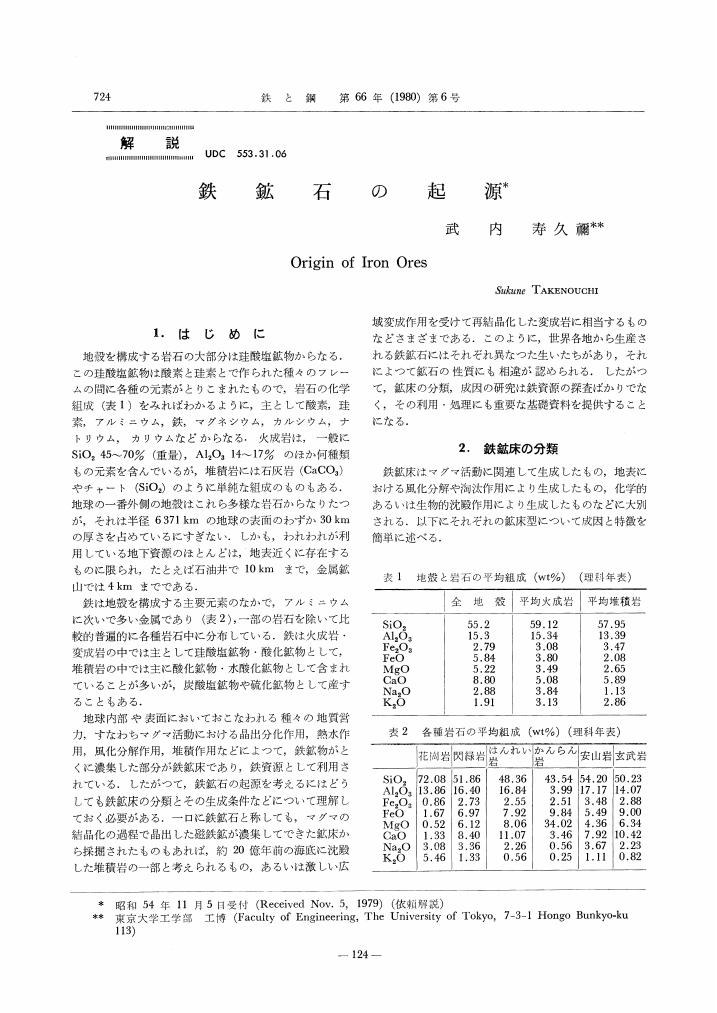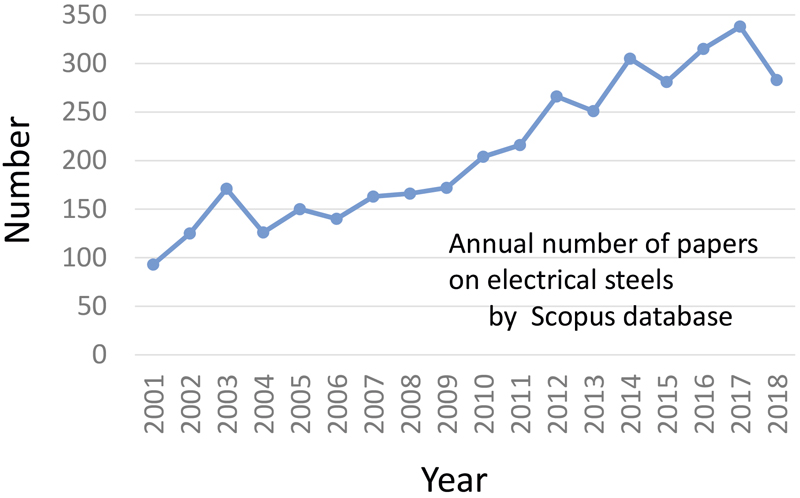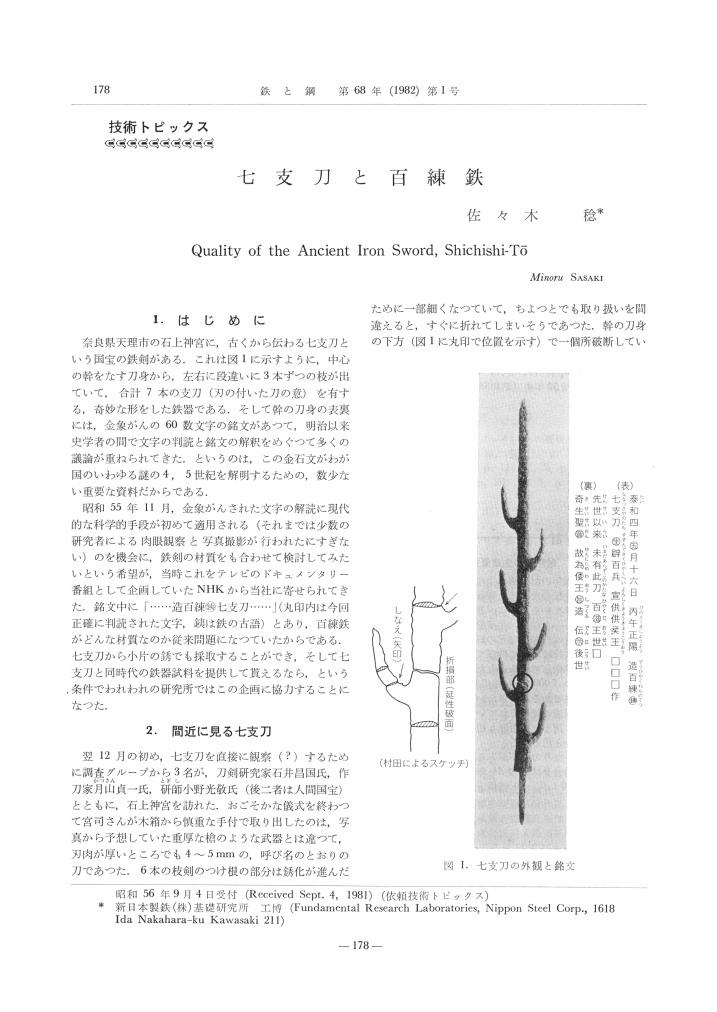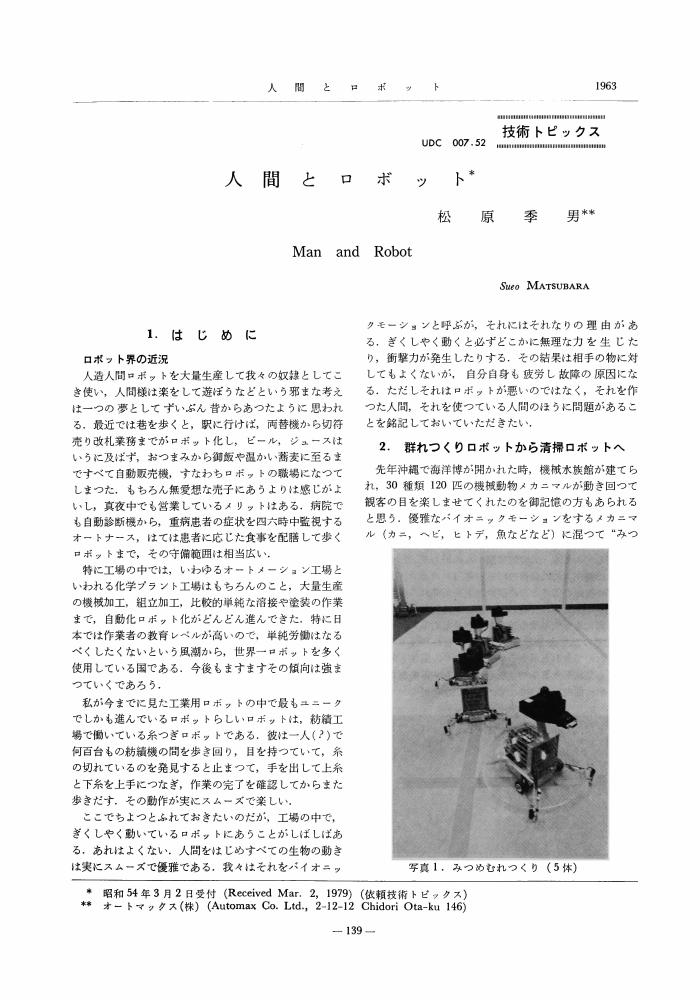7 0 0 0 OA 鉄鉱石の起源
- 著者
- 武内 寿久禰
- 出版者
- The Iron and Steel Institute of Japan
- 雑誌
- 鉄と鋼 (ISSN:00211575)
- 巻号頁・発行日
- vol.66, no.6, pp.724-729, 1980-05-01 (Released:2009-06-19)
- 被引用文献数
- 2 5
7 0 0 0 OA 臨界粒界せん断応力に基づいた多結晶フェライト鋼における上降伏点の解釈
- 著者
- 土山 聡宏 荒木 理 高木 節雄
- 出版者
- 一般社団法人 日本鉄鋼協会
- 雑誌
- 鉄と鋼 (ISSN:00211575)
- 巻号頁・発行日
- vol.106, no.6, pp.382-390, 2020 (Released:2020-05-31)
- 参考文献数
- 22
- 被引用文献数
- 1 4
The upper and lower yield points of ferritic steel containing a small amount of carbon were discussed in terms of the critical stress for dislocation emission from a grain boundary, namely, “critical grain boundary shear stress”, on the assumption of the pile-up model. Considering some experimental results such as tensile testing, relaxation testing and nanoindentation testing on grain boundaries, we concluded that both upper and lower yield points could be similarly understood as a phenomenon of dislocation emission from dislocation sources existing at grain boundaries. The difference in stress between upper and lower yield points was explained in terms of the density of mobile dislocations, which determines the extent of stress concentration at grain boundary caused by pile-up of the dislocations. Slow cooling after annealing or aging at low temperature, by which Cottrell atmosphere is formed, leads to a significant decrement of the mobile dislocation density, and this results in an occurrence of the sharp upper yield point because of a reduced number of piled-up dislocations and insufficient stress concentration at grain boundaries.
7 0 0 0 装甲鈑製造についての回顧録
- 著者
- 佐々川 清
- 出版者
- 社団法人日本鉄鋼協会
- 雑誌
- 鉄と鋼 (ISSN:00211575)
- 巻号頁・発行日
- vol.53, no.9, pp.1119-1129, 1967
- 被引用文献数
- 1
7 0 0 0 OA 空氣中の濕氣と鎔鑛爐の作業(承前)
- 著者
- 杉本 惣吉
- 出版者
- 社団法人日本鉄鋼協会
- 雑誌
- 鐵と鋼 : 日本鐡鋼協會々誌 (ISSN:00211575)
- 巻号頁・発行日
- vol.3, no.9, pp.九九〇-一〇〇五, 1917-09-25
6 0 0 0 OA 無方向性電磁鋼板の最近の開発動向
- 著者
- 早川 康之
- 出版者
- 一般社団法人 日本鉄鋼協会
- 雑誌
- 鉄と鋼 (ISSN:00211575)
- 巻号頁・発行日
- vol.106, no.10, pp.683-696, 2020 (Released:2020-09-30)
- 参考文献数
- 76
- 被引用文献数
- 1 5
This paper gives an overview of developments in the field of non-oriented electrical steels that are widely used in motor cores in recent years, focusing mainly on texture control. ND//<100> texture is recognized as the ideal texture for application to motor cores. To obtain a suitable texture, precise control is required during each manufacturing process. This involves adjusting the chemical components during the steel making, fine temperature and reduction control during hot rolling, temperature control during hot-band annealing, temperature and reduction control during cold rolling and heating rate and temperature control during final annealing. High silicon Fe-Si alloy containing 6.5 mass% Si has been recognized as a promising core material for high frequency applications. When producing high silicon steel by the continuous chemical vapor deposition (CVD) siliconizing process, materials with a gradient Si concentration in the sheet thickness direction have been found to display superior high-frequency iron loss.
- 著者
- 伊丹 哲 井川 良雄 尾崎 義正
- 出版者
- 社団法人日本鉄鋼協会
- 雑誌
- 鐵と鋼 : 日本鐡鋼協會々誌 (ISSN:00211575)
- 巻号頁・発行日
- vol.73, no.13, 1987-09-04
5 0 0 0 OA わが国における製鉄技術の歴史
- 著者
- 舘 充
- 出版者
- The Iron and Steel Institute of Japan
- 雑誌
- 鉄と鋼 (ISSN:00211575)
- 巻号頁・発行日
- vol.91, no.1, pp.2-10, 2005-01-01 (Released:2010-01-19)
- 参考文献数
- 35
- 被引用文献数
- 5 7
Iron making from iron sand in Chugoku district began soon after the introduction of iron ore smelting by the low shaft box-type furnace in the middle of the sixth century and it rapidly spread all over the country, but Chugoku district continued to be the center of its progress. The process consistently developed throughout the ancient and the medieval times towards more elevated furnace temperature by means of increased furnace volume, improved underground facilities for moisture elimination and increased blowing capacity of bellows. The development resulted in the birth of Tatara as the finally-evolved box-furnace on the one hand and in the change of the chief product of smelting from lumpy mixture of metal with slag or a large metal block involving some slag to molten pig iron (Zuku) on th other hand. The priority production of Zuku led to the invention of the two-stage refining process for its conversion into wrought iron (Ohkaji) in the 17th century. Zuku-making by Tatara and refining by Ohkaji formed Japanese indirect wrought iron making system.Metal block (Kera), which was formed in Zuku making from a sort of iron sand hard to fuse (Masa) compared with another sort of iron sand (Akome), proved to contain about 50% parts of steel high in carbon content, which, naturally, were taken out by hammering after the rough crushing by falling-weight methd.Because of economical disadvantages mainly due to inefficiency of iron sand smelting, Japanese indirect iron making system could not survive after 1923 in spite of several successes in developing new iron making process of blast furnace-type. However Tatara is preserved as a technical heritage and is still operated several times a year for direct steel making through Kera.
5 0 0 0 OA 高炉耐火物とその診断技術の進歩
- 著者
- 田村 節夫
- 出版者
- 一般社団法人 日本鉄鋼協会
- 雑誌
- 鉄と鋼 (ISSN:00211575)
- 巻号頁・発行日
- vol.68, no.15, pp.2108-2115, 1982-11-01 (Released:2010-01-19)
- 参考文献数
- 53
高炉耐火物の損傷機構と対策,および耐火物侵食診断技術の現状について概説した.耐火物は種々の原因によつて損傷されるが,いずれにおいても,何らかの形で炉内温度変動が関与しており,損傷の直接原囚として,遠因として,あるいは加速要因として作用する.従つて,炉況の安定が耐火物損傷防止の基本であり,また逆に損傷防止が炉況の安定につながることから,耐火物の寿命延長と安定操業は不可分の関係にある.また損傷機構の解明は,耐火物の材質・構造選定の上からも重要であり,このため損傷過程にある耐火物サンプルの解析あるいは試験室的な損傷状況の再現試験が有力な手段となろう.診断技術については,単に侵食量の推定だけでなく,れんが内で生じる現象,たとえば,き裂の発生,れんがの変質,溶銑の侵入,付着物の形成などの検出,推定まで含めた診断技術の開発が必要である.
5 0 0 0 OA 明治期の海軍工廠における特殊鋼製造とたたら鉄
- 著者
- 渡辺 ともみ
- 出版者
- The Iron and Steel Institute of Japan
- 雑誌
- 鉄と鋼 (ISSN:00211575)
- 巻号頁・発行日
- vol.91, no.1, pp.108-115, 2005-01-01 (Released:2010-01-18)
- 参考文献数
- 41
The traditional steel manufacturing (Tatara) of Japan which developed in the early modern times fell into the decline in the Meiji Period. On the other hand, because it is being made by reducing iron sand with charcoal, the amount of phosphorus and sulfur of Tatara iron is low. Therefore it was adopted as a raw material of the alloy steel at Naval Arsenal of the Meiji latter period. The purpose of the main subject is to explain that process.The quality which the navy demanded was limited to the speck of the low phosphorus. Then, the navy never tried to admit the cost which corresponded with that quality. The makers of Tatara iron had efforts to cope with a naval requirement. But, they had to give up their Tatara business suddenly. That was because naval warship manufacture stopped observing Washington disarmament treaty. They advanced all together to charcoal industry after that.
5 0 0 0 OA 日本刀の冶金学的研究
- 著者
- 谷村 〓
- 出版者
- The Iron and Steel Institute of Japan
- 雑誌
- 鉄と鋼 (ISSN:00211575)
- 巻号頁・発行日
- vol.67, no.3, pp.497-507, 1981-03-01 (Released:2010-01-19)
- 参考文献数
- 8
- 被引用文献数
- 5 3
5 0 0 0 OA 参考文献
- 出版者
- 一般社団法人 日本鉄鋼協会
- 雑誌
- 鉄と鋼 (ISSN:00211575)
- 巻号頁・発行日
- vol.51, no.7, pp.1331-1333, 1965-06-01 (Released:2010-12-22)
5 0 0 0 OA 金属間化合物により粒界被覆した多結晶Ni基耐熱合金の微細組織とクリープ特性
- 著者
- 伊藤 孝矩 山﨑 重人 光原 昌寿 中島 英治 西田 稔 米村 光治
- 出版者
- 一般社団法人 日本鉄鋼協会
- 雑誌
- 鉄と鋼 (ISSN:00211575)
- 巻号頁・発行日
- pp.TETSU-2016-107, (Released:2017-03-06)
- 参考文献数
- 37
- 被引用文献数
- 4
Creep properties and microstructures for a polycrystalline Ni-based heat-resistant alloy whose grain boundaries were covered by dense intergranular intermetallics were investigated. Creep tests were carries out at 850°C and 80-130 MPa. The creep strength of this alloy was higher than the Alloy617 and HR6W, and equal to the Alloy740, which are pre-existing candidate materials for steam pipes of A-USC power plant. The retardation of acceleration of creep rate was observed characteristically in the creep curves. This retardation behavior was deeply related to the superior creep strength of this alloy. The spherical Ni3Al (γ’) particles were distributed uniformly in the grain interior, whose coarsening behavior was monotonically dependent on the creep time. The intermetallics of Laves phase and σ pahse were formed densely at grain boundary. High coverage ratio of the intergranular intermetallics was maintained until the later stage of acceleration creep region. Therefore, it suggested that the retardation of creep acceleration was not caused by the precipitates behavior of intragranular γ’ particles and intergranular intermetallics, though both the precipitates were understandably effective against the creep strengthening. The plate-like Laves phase was formed in the grain interior during creep. The evolution of volume fraction of intragranular Laves phase depended on not creep time but creep strain. From the results of SEM/EBSD analyses and TEM observations, it revealed that the intragranular Laves phase enhanced the work-hardenability due to the constraint on plasticity and originated the retardation of creep acceleration.
5 0 0 0 OA 鉄鋼に関する50年の推移
- 出版者
- 一般社団法人 日本鉄鋼協会
- 雑誌
- 鉄と鋼 (ISSN:00211575)
- 巻号頁・発行日
- vol.51, no.8, pp.1347-1382, 1965-07-01 (Released:2010-10-12)
- 被引用文献数
- 1
- 著者
- 芹澤 正雄
- 出版者
- 社団法人日本鉄鋼協会
- 雑誌
- 鉄と鋼 (ISSN:00211575)
- 巻号頁・発行日
- vol.73, no.10, pp.1281-1287, 1987
4 0 0 0 OA 七支刀と百練鉄
- 著者
- 佐々木 稔
- 出版者
- The Iron and Steel Institute of Japan
- 雑誌
- 鉄と鋼 (ISSN:00211575)
- 巻号頁・発行日
- vol.68, no.1, pp.178-184, 1982-01-01 (Released:2010-01-19)
- 参考文献数
- 6
- 被引用文献数
- 2
4 0 0 0 OA 鋼材の火花試驗に關する研究1)(第1報)
- 著者
- 三島 徳七 三橋 鐵太郎
- 出版者
- The Iron and Steel Institute of Japan
- 雑誌
- 鐵と鋼 (ISSN:00211575)
- 巻号頁・発行日
- vol.28, no.2, pp.117-136, 1942-02-25 (Released:2009-07-09)
- 参考文献数
- 49
Die Schleiffunken der allen Stahlsorten haben kenzeichnende Merkmale. Die Funkenprobe bildet daher ein einfaches und weitverbreitetes Mittel zur Feststellung der Werkstoffzusammensetzung und zur Vermeidung von Werkstoffvermischung.Ein Teil dieser Arbeit, über den hier berichtet wurde, sollte Genauigkeit dieser Funkeprobe fur C-Stähle, auch die Zusammenhang zwischen die Funkenformen und die Menge der speziellen Elementen, wie Ni, Cr, Mn, Si, feststellen.In Fe-C-Mn Legierungen befindet sich ein schwerfunkbares Gebiet. Die Abhängigkeit von der Härte und dieser Schwerfunkbarkeit wurde nicht festgestellt.Karbide im Gusseisen ist immer schwerfunkbar, welches nach Graphitisation beim Ausglü hen wieder wesentlich funkbar wird. Das Gleiche wird auch im Cr-Gusseisen festgestellt, welches in Abhängigkeit von der steigernden Al Gehalten allmählich schwerfunkbar wird.Das Gefüge der amerikanischen handelsübrigen nichtfunkbaren Legierungen, die zu Ni-Cr-und Fe-W-Cr-VLegierungen (z.B. 18-4-1 Typus) gehören, besteht aus Austenit und Karbide.
4 0 0 0 OA 人の意思決定が埋め込まれた生産システムのモデル化と分析
- 著者
- 水山 元
- 出版者
- 一般社団法人 日本鉄鋼協会
- 雑誌
- 鉄と鋼 (ISSN:00211575)
- 巻号頁・発行日
- vol.109, no.6, pp.501-512, 2023-06-01 (Released:2023-05-31)
- 参考文献数
- 58
- 被引用文献数
- 1
Most production systems are operated in a human-in-the-loop fashion, and it is sometimes argued that the human decisions involved make it possible, or at least easier, for the systems to cope with various stationary and nonstationary variations. However, it has not been well-studied and understood how this positive contribution of human decisions work, what factors determine its effect, how the function should be supported or fostered, etc. This paper first briefly reviews conventional production systems simulation techniques and discusses why it is difficult for them alone to address aforementioned questions. This next points to some recent attempts, in production systems engineering and related areas, to study human decisions and their effects by complementally using gaming simulation and agent-based simulation and highlights the potential of combining such behavioral and computational scientific approaches. Then, the paper introduces a cognitive framework model composed of interface, interaction, and incentive dimensions. It can be used for formally characterizing the decisions made by an individual facing a problem situation in operating a production system, and functions as a bond connecting behavioral and computational analyses of the decision maker. The paper further presents some example ongoing research projects worked on by the author’s team in this direction and discusses some future perspective.
4 0 0 0 OA 水素還元によって得られた純鉄中の不純物の熱力学
- 著者
- 柏谷 悦章 長谷川 将克
- 出版者
- 一般社団法人 日本鉄鋼協会
- 雑誌
- 鉄と鋼 (ISSN:00211575)
- 巻号頁・発行日
- vol.100, no.2, pp.302-311, 2014 (Released:2014-01-31)
- 参考文献数
- 16
- 被引用文献数
- 4 2
Hydrogen itself is not a primary energy and needs an energy for its production, which means that CO2 will be exhausted during the production process, more or less. However, when a Green Hydrogen can be produced, it is a best way to use the hydrogen instead of carbon.In this study, two kinds of iron ore were reduced and melted both under hydrogen and carbon atmosphere. The obtained iron metal under hydrogen atmosphere was quite pure one. The impurities in the metal were chemically and thermodynamically analyzed. The characteristics and benefits of hydrogen reduction were discussed in comparison with the carbon reduction.The content of silicon in the metal under hydrogen atmosphere was one tenth to the iron obtained by carbon reduction. Manganese was about one third to one tenth against the carbon reduction. However, phosphorus in the hydrogen reduction was almost the same level to the carbon reduction. Sulfur content became half in the hydrogen reduction. Moreover, the content of hydrogen in the metal was the same level between the hydrogen reduction and the carbon reduction. It was found that the rate of hydrogen evolution from a molten metal during solidification was fast significantly. The activities of elements in the metal were calculated through the thermochemical data, and the relationships among those elements were elucidated.From the thermodynamic analysis, a high oxygen activity in the metal obtained under hydrogen atmosphere caused to a low content of impurities and high activity of oxides related.
4 0 0 0 OA 人間とロボット
- 著者
- 松原 季男
- 出版者
- The Iron and Steel Institute of Japan
- 雑誌
- 鉄と鋼 (ISSN:00211575)
- 巻号頁・発行日
- vol.65, no.13, pp.1963-1971, 1979-11-01 (Released:2010-02-22)
4 0 0 0 OA 転位論・強化機構論 −その歴史の概略と現状の問題点−
- 著者
- 丸川 健三郎 大村 孝仁
- 出版者
- 一般社団法人 日本鉄鋼協会
- 雑誌
- 鉄と鋼 (ISSN:00211575)
- 巻号頁・発行日
- vol.100, no.9, pp.1076-1088, 2014 (Released:2014-08-31)
- 参考文献数
- 98
- 被引用文献数
- 6 4
A short historical review is given for the dislocation theory in the special reference to the mechanism of metal strengthening. Until the mid of 1950’s, the basic formalism of the dislocation theory has been completed. However, the further development has been confronted by various difficulties in the application of the theory to elucidate the strengthening mechanism, although some progress in problems, such as the visualization of individual dislocations and the measurement of the dislocation velocity, has been made. The present status of this research field, inclusive of recent developments, is described. The solution hardening, the work hardening, the low temperature strength and others are discussed in some details. Recent experimental treatises to examine the strengthening mechanisms are also overviewed.









